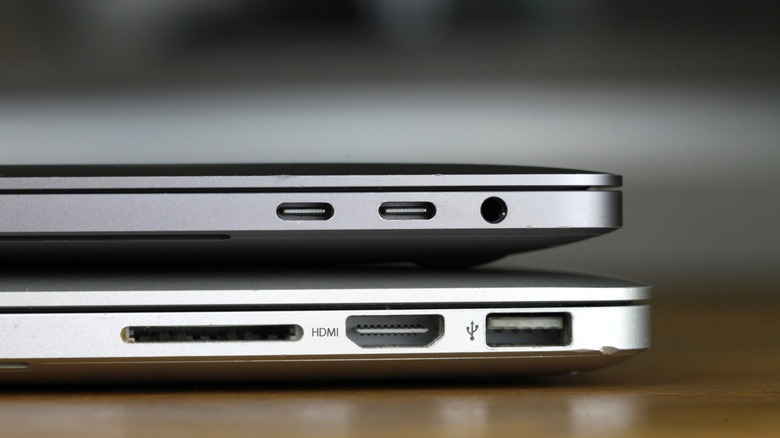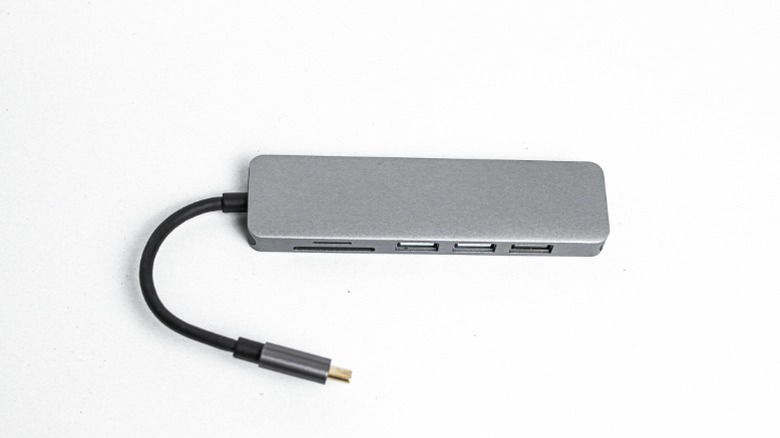Why Do Modern MacBooks Only Have USB-C Ports
If you've owned a MacBook that was released between 2016 and 2020, you've probably noticed that there isn't much variety when it comes to the port selection. There's usually just a headphone jack, a couple of USB-C ports, and well, that's it. Apple first introduced this approach to its major computers on the 2016 MacBook Pro. The 13-inch version had two USB-C ports, while the 15-inch version had four. With this, Apple welcomed a new era where one port could perform multiple functions.
Each USB-C port can handle power delivery, data transfer, video output, and more, all through a single reversible connector. They even support Thunderbolt connectivity. Apple's vision was to create a simpler, sleeker, and more universal ecosystem that reduced clutter while offering maximum versatility. Gone were the days of multiple specialized ports like HDMI, USB-A, and MagSafe. This decision allowed Apple to create laptops that were thinner than ever, especially considering the power and performance that they provided. Apple saw USB-C as the future of computing, and in typical Apple fashion, it wasn't afraid to lead the charge, even if that meant some fans of the brand struggled to catch up.
The dongle dilemma (and how it paid off)
When Apple went all-in on USB-C, many people felt abandoned in some way. They didn't anticipate such an abrupt shift away from what they knew, which meant everyday tasks suddenly required adapters. Whether you were trying to connect flash drives, SD cards, or even plug in your iPhone. The "dongle life" became a running joke online at the expense of Apple fanboys, a result of what people saw as Apple's obsession with form over function. People criticized the brand for prioritizing its minimalist design language over user convenience.
The switch to USB-C was innovative and pretty forward-looking. But critics argued that the company had rushed too far ahead. And to some extent, they were right, at least at the time. Fast forward a few years, and things look different. USB-C has become the global standard, showing up on everything from Android phones to portable hard drives, and even Apple's latest iPhones. Apple eventually listened, bringing back MagSafe and HDMI on newer MacBook Pro models. This showed that they weren't above striking a balance between innovation and practicality, especially for professionals who opt for the MacBook Pro. In hindsight, those frustrating dongle days were growing pains in a much bigger transition. We're now living in the world Apple helped usher in, where one cable can perform multiple functions and is, more or less, the universal standard.

